Category: Health
Eliminating Hunger After School: Expansion of the Afterschool Meal Program for Washington Kids Luncheon set for January 28
Source: Children’s Alliance
What: Afterschool program providers and administrators of the federal child nutrition programs throughout Washington will attend the Luncheon – Eliminating Hunger After School: Expansion of the Afterschool Meal Program for Washington Kids – to learn how they can implement and expand federally funded programming to eliminate hunger experienced by children after school, on weekends, and during school holidays.
The summit, organized by the Children’s Alliance and the Food Research and Action Center, will provide a forum for current and potential afterschool meal providers to share their successes in bringing afterschool meals to the children they serve in Washington.
When: Monday, January 28, 2013 from 11:30 a.m. to 1:30 p.m.
Where: United Way of King County, 720 Second Avenue, Seattle, WA 98104
Why: Washington’s childhood poverty rate is over 18 percent and the percentage of Washington families experiencing food insecurity has increased in recent years.
Extending the reach of the Afterschool Meal Program to all eligible communities throughout the state will ensure that the children of Washington can participate fully in their afterschool activities, while also receiving the nutrition they need and may not have access to outside of school.
See registration page and agenda here.
The Luncheon was organized by the Children’s Alliance and the Food Research and Action Center in partnership with the Afterschool Meals Workgroup, and with support from the ConAgra Foods Foundation.
Pollutants in smoke from winter fires can pose health risk
Washington State Department of Health
Smoke from wood fires—like the ones that keep your home warm and cozy in the winter—can be a health hazard for some people. Wood smoke and other air pollutants can be trapped near the ground when winter weather patterns cause stagnant air. Smoke contains fine particles and toxic gases that can be breathed deep into the lungs where they can cause immediate and long-term health problems. The level of air pollution that causes health problems is different for each person. Some people are at greater risk than others, and can have symptoms sooner, including: people with heart and lung disease, older adults who may have unrecognized health conditions, and children, whose developing lungs are more easily damaged. Often the pollution can’t be seen or smelled, so it can be helpful to check air quality before doing things outside, especially if you’re in a high-risk group. Real-time information on air quality conditions and statistics on air pollution for most counties is available online. You can check the Department of Health’s website for information on how air quality can affect your health.
WIC serves more than 315,000 women and children each year
Lots of people who are eligible for the WIC nutrition program haven’t applied
Washington State Department of Health
More than 65,000 children and pregnant or breastfeeding mothers qualify for—but aren’t enrolled in—the state’s Women, Infants, and Children (WIC) program. WIC provides nutrition counseling, free healthy foods, and breastfeeding support and health screenings for babies. African American, Pacific Islander, and Native American women have particularly low participation in the program during pregnancy, yet have some of the highest rates of premature and low birth weight babies. WIC wants to provide more women with services that boost their health, improve birth outcomes, and contribute to healthier babies. Many eligible women don’t know about the program or don’t know that they—and their children younger than five—qualify. Cathy Franklin of the WIC program says that a woman may assume her family makes too much money if she’s working. But that’s often not the case. A household of four can make $3,554 a month and still be eligible. A family with two qualifying people, like a breastfeeding mother and her baby, would receive checks for up to $100 of healthy food a month (along with other services). WIC currently serves more than 315,000 women and children each year in its 205 clinics across Washington. Find more information about WIC and how to apply at the Department of Health’s WIC website or by calling the Family Health Hotline at 1-800-322-2588.
Fourth flu death of Snohomish County confirmed
By Monica Brown, Tulalip News writer
Snohomish County has had its fourth confirmed death from the flu. A Stanwood man in his 90’s passed away Jan. 8 of influenza. In December there were 3 deaths from the flu, a Bothell woman in her 40’s and an Everett and an Edmonds woman both in their 80’s.
There have been 66 people hospitalized with influenza in the Snohomish County. Those who should be vaccinated are at people with a high risk of developing serious complications like pneumonia if they get sick with the flu; people who have certain medical conditions including asthma, diabetes, and chronic lung disease, pregnant women, people 65 years and older.
The Tulalip Health Clinic is offering free flu shots
Mon, Tues, Thurs, Fri from 9:00 – 11:30 and from 1:15 – 4:00
Also on Weds, 10:00 – 11:30 and from 1:15 – 4:00 pm
Reminder:
Symptoms of the flu are characterized by vomiting, diarrhea, headache, runny nose, sore joints, fatigue, muscle ache, cough, and sore throat. These flu symptoms often show up with 2-3 days after coming in contact with the disease, and can last somewhere between 5 to 14 days, all depending on the strain of the virus and the patients’ ability to fight it off.
WebMD suggests 8 Natural Tips to Help Prevent a Cold and Flu
- Wash your hands, often.
- Use a tissue to cover your sneezes and coughs and not your hands.
- Don’t touch your face, especially your eyes, nose and mouth.
- Do aerobic exercises regularly, exercise helps to increase the body’s natural virus-killing cells.
- Eat foods containing Phytochemicals, so put away the vitamin pill, and eat dark green, red, and yellow vegetables and fruits.
- Don’t smoke.
- Cut Alcohol Consumption.
- Relax.
If you would like to know more about the influenza and the vaccine please visit
The center for disease control
Big Tobacco: Corporate Insight and the Red Road
By Charles Kaider, Indian Country Today Media Network, http://indiancountrytodaymedianetwork.com
A recent study by the economist John Dunham on behalf of the New York Association of Convenience Stores (NYACS) attempted to show that untaxed packs of cigarettes were acquired on a one to one basis for every taxable pack of cigarettes purchased by New York State citizens. Conclusions reached by this report included the assertion that New York State failed to do enough “…to further close down an obvious avenue of tax avoidance,” i.e., Native American businesses which were circumventing established state tax schemes. The report immediately drew news outlet headlines.
Mr. Dunham’s policy group counts Big Tobacco among its clientele.
A sociology mentor of mine would reference the adage “lies, damn lies and statistics” in class. Although the Dunham study may have taken some liberties with the raw data, the point it was trying to make was made; the problem is that New York cigarette taxes are too high. This conclusion was also reached by Jonathan Taylor in 2008 in an economic impact study commissioned by the St. Regis Mohawk Tribe. Taylor wrote presciently, “taxes diminish the losers by more than the winners gain.”
Instead of sticking to these revealed economic maxims, the Dunham report illuminated the real agenda at hand, stigmatizing Indian country businesses in New York, as well as in “other states with Native American reservations.” The now cliché tie-in between “organized crime, drug gangs, human trafficking and terrorism” and untaxed cigarette sales is established mid-report. The report hopefully offers “there are some immediate steps that New York should be taking…to enforce existing laws pertaining to Native Americans that could reap significant benefits.”
Only policy wonks will believe these pat answers after reading them. Ask the New York State Police how effective baton-swinging tactics are with non combatives, as that agency prepares to settle a 1997 brutality lawsuit in Onondaga Territory stemming from a raid on ceremonial tobacco-burning Onkwehonweh (Original People). Lionizing whole reservations and stirring a new generation of Haudenosaunee (Iroquois) to action is one byproduct of such hyperbole. It may be easy to start that fire, but it is much harder to put out thereafter.
Political highway theatre might be one way of thinking about grass roots pushback to thinly veiled coercion. The roads and power lines and pipelines routed through sovereign territories may have been expediently planned back in the day as convenient usage of restricted land. Now, each conveyance is an exploitable resource and exposed pressure point. It is possible that bluster has an even deeper response from threatened Onkwehonweh populations. Establishing new businesses under Indian Title land ownership, closer to metropolitan consumers, would further alter the landscape of commercialism. On-premises Indian smoke shop sales take on a whole new meaning when conducted from RV’s in Times Square.
To date, the satisfaction of reservation businesses has been just to stay open in many cases. Many such entrepreneurial efforts die on the vine without mainstream financing opportunities due to collateral recovery obstacles by lenders. If that is not enough evidence of the implications of doing business on sovereign reservations, then I do not know what is. Yet, this original status is often trivialized.
There is also a political element to the latest study. John Dunham has a recent track record of working with Republican Party candidates on both regional, as well as national levels, including former presidential candidate Texas Governor Rick Perry and former Connecticut Senate candidate / World Wrestling Entertainment (WWE) executive Linda McMahon.
In classic style, deriding New York State tax impotence also poorly lights the halo of rising Democratic Party star, Governor Andrew Cuomo. It should be noted that Andrew’s father, former Governor Mario Cuomo, developed the experience that New York State government has called upon to assist with Onkwehonweh socio-economic issues, for more than a quarter-century. This in-house counsel surely lends itself to the current occupant of the Governor’s Mansion to avoid thinking that he can bludgeon these factors to solution. The recognition of complex problems is vital to any executive seasoning. Look before you leap.
New York citizens are also voters, as well as tax payers. They are not the enemy of Onkwehonweh commerce. In fact, they support it with every visit to reservation areas, voting with their feet. They understand that relationship quite well, as well as why they have that personal choice.
On the other hand, anti-sovereign activists such as the Central New York-based Upstate Citizens for Equity (UCE) relish the substance of this report. This group has sought the dissolution of Onkwehonweh businesses by brute force. The desire of such an agenda hinges on the complicity of followers to not think critically and make broad assumptions of fact.
Meanwhile, high cigarette taxes direct many citizens down reservation roads, where they are met by waiting friends. Friendships that last a lifetime.
Charles Kader (Turtle Clan) was born in Erie, Pennsylvania to a World War Two veteran. He attended Clarion University of Pennsylvania, earning degrees in Communication and Library Science, as well as Mercyhurst College where he earned a graduate degree in the Administration of Justice. He has worked across Indian country, from the Blackfeet Community College in Browning, Montana (where he married his wife) to the Saint Regis Mohawk Tribe, and now resides in Kanienkeh.
Diabetes Day today at Tulalip Health Clinic from 9:30 – 3:30
By Monica Brown Tulalip News writer
Janurary 16, 2013
TULALIP, Wash-
The event began today with and opening prayer and is scheduled to run until 3:30 p.m. Breakfast was served with the intention to inform about healthy options for people either with diabetes or wanting to ward off diabetes. Tribal member Hank Gobin gave a informative speech about diabetic care.
Lunch will be served from noon to 1:30pm. Clinic staff will be offering comprehensive Diabetic Services for all Tulalip Tribal members and authorized patients of the Karen I Fryberg Tulalip Health Clinic.
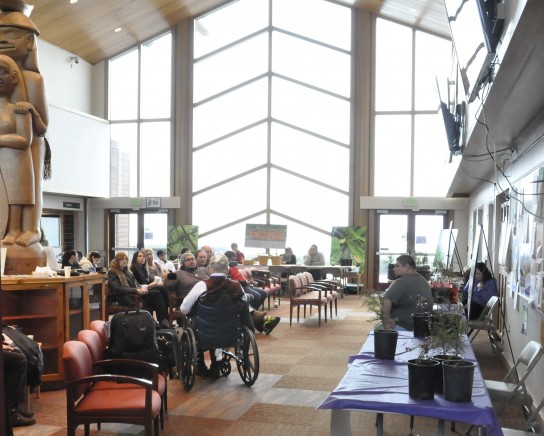
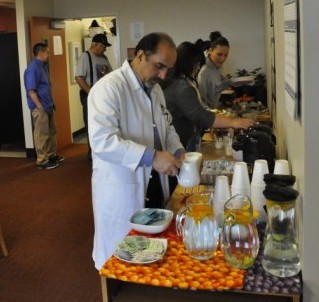
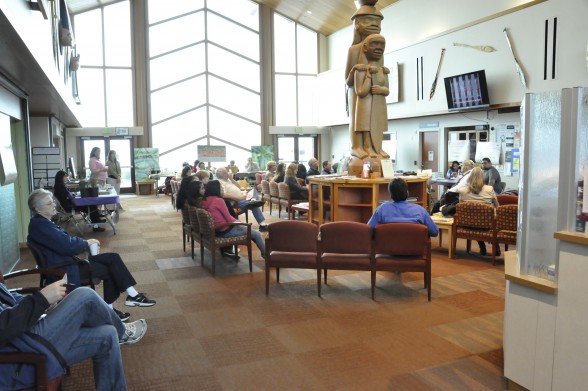
Burn bans continue for Snohomish County, Tulalip & Stillaguamish tribes
Snohomish County is one of three counties in which the Puget Sound Clean Air Agency has lowered the air quality burn ban to Stage 1 until further notice.
“Air pollution levels throughout the region have dropped, likely due to clouds and warmer temperatures,” said Dr. Phil Swartzendruber, forecaster for the Puget Sound Clean Air Agency. “The drop in pollution could also be due to the help of our communities following the burn ban. Calm, cold and clear weather conditions are likely to continue over the next few days, so ongoing cooperation with the burn ban will help keep our air healthy.”
The Puget Sound Clean Air Agency will continue to closely monitor the air quality and weather situation.
During a Stage 1 burn ban:
• No burning is allowed in fireplaces or uncertified wood stoves. Residents should rely instead on their homes’ other, cleaner sources of heat, such as their furnaces or electric baseboard heaters, for a few days until air quality improves, the public health risk diminishes and the ban is cancelled.
• No outdoor fires are allowed. This includes recreational fires such as bonfires, campfires, and the use of fire pits and chimineas.
• Burn ban violations are subject to a $1,000 penalty.
• It is okay to use natural gas, propane, pellet and EPA-certified wood stoves or inserts during a Stage 1 burn ban.
The Washington State Department of Health recommends that people who are sensitive to air pollution limit their time spent outdoors, especially when exercising. Air pollution can trigger asthma attacks, cause difficulty breathing, and make lung and heart problems worse. Air pollution is especially harmful to people with lung and heart problems, people with diabetes, children and adults older than 65 years.
The Tulalip and Stillaguamish tribes are likewise among the six Native American reservations on which the U.S. Environmental Protection Agency Region 10 will continue a burn ban on all outdoor burning until further notice, due to stagnant air conditions that are forecast to prevail over the next few days.
This burn ban applies to all outdoor and agricultural burning, including camping and recreational fires within reservation boundaries. Ceremonial and traditional fires are exempt from the outdoor burn ban.
The EPA also requests that reservation residents reduce all sources of air pollution, including excess driving and idling of vehicles, and the use of wood stoves and fireplaces, unless it is their only source of heat.
Air pollution can have significant health impacts. Cooperation from the community will help people who are at risk during this period. Those most at risk are children, the elderly, pregnant women, and those with difficulty breathing, and with heart and lung problems. Those at risk should avoid outdoor exercise and minimize their exposure to outdoor pollution as much as possible.
Please call 1-800-424-4EPA and ask for the Federal Air Rules for Reservations Hotline, or visit the FARR website for the current burn status at www.epa.gov/region10/farr/burnbans.html.
Regional burn bans called to protect public health
Puget Sound Clean Air Agency
Burn bans in effect in King, Pierce, Snohomish
SEATTLE, WA – To protect the public from unhealthy levels of air pollution, the Puget Sound Clean Air Agency has issued burn bans for King, Pierce and Snohomish counties. The bans are designed to reduce public exposure to harmful wood smoke pollution from indoor and outdoor burning.
Wood smoke is a growing health concern nationally and increasing attention is paid to the health impacts from short- and long-term exposure to the fine particles and other pollutants it contains. Recent studies have tied wood smoke exposure to health effects such as aggravated asthma, increased heart attacks, acute bronchitis and chronic lung disease.
Locally, high levels of wood smoke pollution violate the federal Clean Air Act in the greater Tacoma area. Within this area, known as the Tacoma-Pierce County Smoke Reduction Zone, the Puget Sound Clean Air Agency is implementing robust new enforcement and assistance programs recommended by the community to clean up the air.
Fine particle pollution levels are monitored daily by the Puget Sound Clean Air Agency at more than a dozen locations in four counties, including three sites inside the Smoke Reduction Zone. The figure below shows daily accumulation of fine particles as measured by a device known as a “Federal Reference Method sampler.” The sampler inhales approximately twice as much air as the average adult over the course of a 24-hour period.
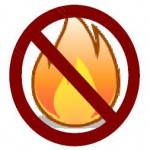
The “Stage 2” burn ban will remain in effect as long as air quality conditions remain poor. Until then, no burning is allowed in any wood-burning fireplaces, stoves or fireplace inserts. Use of pellet stoves and all outdoor burning is also prohibited.
Residents should instead temporarily rely on their home’s non-wood source of heat.
Updated air quality information and current burn ban status are available through the Puget Sound Clean Air Agency at www.pscleanair.org or (800)552-3565.
Tulalip Diabetes Day, Jan 16
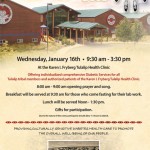 Providing culturally sensitive diabetes health care to promote the overall well-being of our people
Providing culturally sensitive diabetes health care to promote the overall well-being of our people
Join the Karen I Fryberg Tulalip Health Clinic staff on Wednesday, January 16 for Diabetes Day 2013.
The event is schedule for 9:20 a.m. – 3:30 p.m., and will being 8:00 a.m. with an opening prayer and song. Lunch will be served at noon.
Clinic staff will be offering comprehensive Diabetic Services for all Tulalip Tribal members and authorized patients of the Karen I Fryberg Tulalip Health Clinic.






